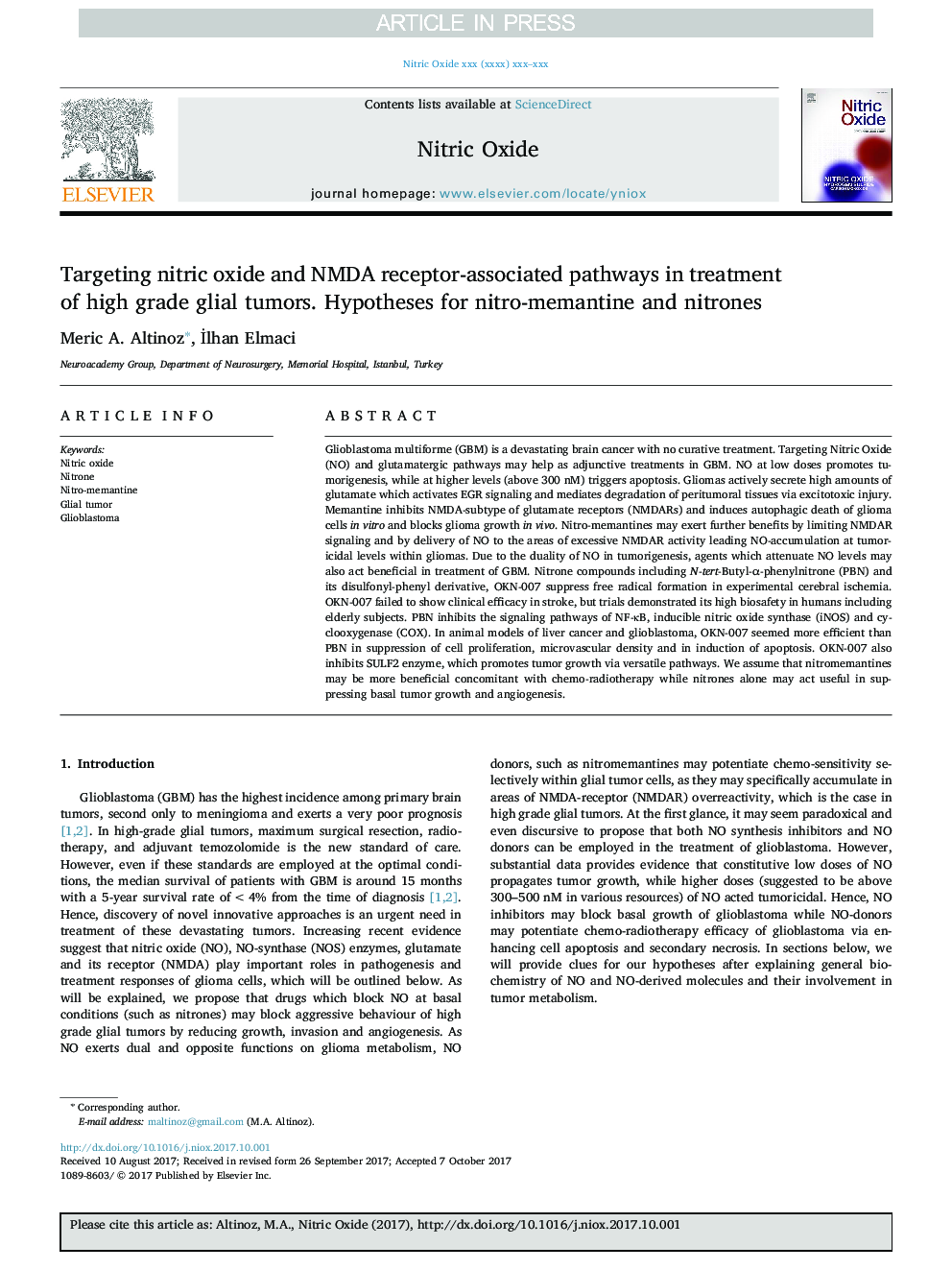| Article ID | Journal | Published Year | Pages | File Type |
|---|---|---|---|---|
| 8344428 | Nitric Oxide | 2018 | 16 Pages |
Abstract
Glioblastoma multiforme (GBM) is a devastating brain cancer with no curative treatment. Targeting Nitric Oxide (NO) and glutamatergic pathways may help as adjunctive treatments in GBM. NO at low doses promotes tumorigenesis, while at higher levels (above 300 nM) triggers apoptosis. Gliomas actively secrete high amounts of glutamate which activates EGR signaling and mediates degradation of peritumoral tissues via excitotoxic injury. Memantine inhibits NMDA-subtype of glutamate receptors (NMDARs) and induces autophagic death of glioma cells in vitro and blocks glioma growth in vivo. Nitro-memantines may exert further benefits by limiting NMDAR signaling and by delivery of NO to the areas of excessive NMDAR activity leading NO-accumulation at tumoricidal levels within gliomas. Due to the duality of NO in tumorigenesis, agents which attenuate NO levels may also act beneficial in treatment of GBM. Nitrone compounds including N-tert-Butyl-α-phenylnitrone (PBN) and its disulfonyl-phenyl derivative, OKN-007 suppress free radical formation in experimental cerebral ischemia. OKN-007 failed to show clinical efficacy in stroke, but trials demonstrated its high biosafety in humans including elderly subjects. PBN inhibits the signaling pathways of NF-κB, inducible nitric oxide synthase (iNOS) and cyclooxygenase (COX). In animal models of liver cancer and glioblastoma, OKN-007 seemed more efficient than PBN in suppression of cell proliferation, microvascular density and in induction of apoptosis. OKN-007 also inhibits SULF2 enzyme, which promotes tumor growth via versatile pathways. We assume that nitromemantines may be more beneficial concomitant with chemo-radiotherapy while nitrones alone may act useful in suppressing basal tumor growth and angiogenesis.
Related Topics
Life Sciences
Biochemistry, Genetics and Molecular Biology
Biochemistry
Authors
Meric A. Altinoz, Ä°lhan Elmaci,
